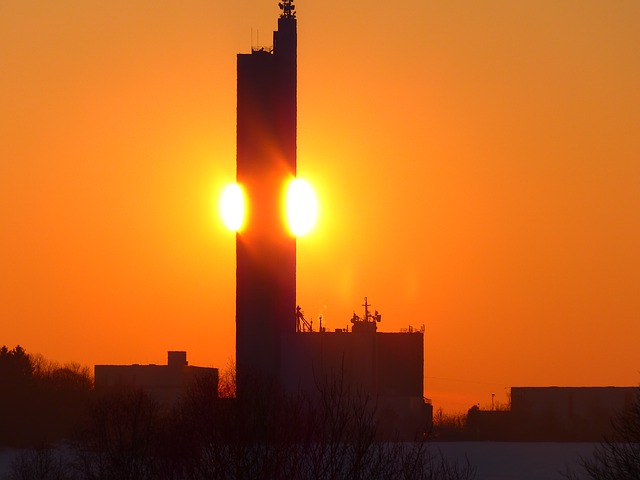High Performing Buildings – September's Roundup
In this month's high performing buildings roundup, we are focussing on commercial real estate that's achieving environmental and social excellence. Providing...
Read Full Article
Following last week’s Met Office amber extreme heat warning, a polymer specialist has warned current sustainable design must mitigate overheating in buildings as heatwaves become more prevalent.
Recent research of 520 M&E contractors and architects, 130 of which worked specifically on apartment buildings, in REHAU’s report Designing Healthy Apartments, also raised similar concern. The majority of these respondents felt that sustainability would be the most important design issue over the next ten years in multi-residential buildings, closely followed by temperature control.
These conditions pose a health hazard for the building occupants living in such temperatures, which reached over 30 degrees in Wales and Southern and Central England last week, resulting in the amber warning for affected areas. As such, Steve Richmond, Head of Marketing and Technical at REHAU Building Solutions, draws attention to the importance of including efficient cooling methods as part of “healthy designs’” in order to futureproof buildings.
For those looking to safeguard employees and themselves in the here and now, Alex Minett, Head of Product & Markets at CHAS, shared some tips for working comfortably in high temperatures.
“As pressure increases to make buildings more energy efficient through improved insulation, very few measures are being put in place to offset excessive indoor temperatures during the warmer weather," said Steve. "As we continue to see fluctuations between colder winters and hotter summers, consultants and contractors should consider measures in design buildings to be able to cope with these contrasting conditions, while retaining sustainability credentials.
“Additionally, government targets of reaching net-zero emissions by 2050, means cooling methods will need to be efficient and low energy. ‘Healthy design’ therefore not only needs to be beneficial to the people living inside, but environmentally friendly too. Consequently, our new guide to healthy apartment design outlines possible solutions that are more efficient than traditional mechanical cooling methods and can help contractors and specifiers meet this sustainability challenge.”
Thermally Activated Building Structures (TABS), for instance, regulate the temperature of the building by running hot or cold water through the pipes within the concrete slabs, continually removing heat during hotter months. As such, these avoid the need for mechanical energy intensive cooling systems and regulate heating and cooling efficiently across the year.
As identified by groups such as the Climate Change Committee (CCC), large numbers of heat pumps are needed to reach net-zero. On top of delivering efficient, low-carbon space heating and hot water, heat pumps can also provide cooling via underfloor heating pipework. To support heat pumps, underfloor heating & cooling and other means of cooling such as fan coils and chilled ceilings, specifiers and contractors should consider incorporating smart controls into their projects.
“Energy efficiency will remain a key priority and as end users come to expect solutions to deliver this,” said Steve. “Employing technologies such as smart controls to regulate low-carbon temperature systems will help to ensure sustainability and occupant wellbeing requirements are met. Solutions such as REHAU’s NEA Smart 2.0 use intelligent algorithms and sensors to regulate temperature and reduce energy consumption, while further improving occupant wellbeing by monitoring humidity to improve air quality.
“Last week’s hot weather is going to become an increasingly common occurrence across summers each year, so it is now more important than ever that our buildings are equipped to avoid overheating and subsequent issues for occupants. With this guide, we aim to provide solutions that will help to alleviate such issues in order to futureproof infrastructure by balancing between sustainable solutions with those that promote wellbeing.”
Picture: sun on building.
Article written by Bailey Sparkes | Published 30 July 2021
In this month's high performing buildings roundup, we are focussing on commercial real estate that's achieving environmental and social excellence. Providing...
Read Full ArticleResearchers and scientists are experimenting with Biochar, the carbon-rich soil, to examine its use within the built environment. Discovered via observing the man-made...
Read Full ArticleFor 2021’s new starters, the first group to undertake a full degree after COVID-19, the university experience will inevitably be different. As Paul Bean from...
Read Full ArticleGlobal carbon emissions have rebounded to pre-pandemic levels, according to the International Energy Agency – business as usual is not an option. Scientists...
Read Full ArticleAs deaths due to excess heat increase, the Building Engineering Services Association is calling for more concerted efforts to adapt the built environment’s...
Read Full ArticleDeveloper Helical has appointed McLaren Construction as the main contractor for the £90 million remodelling and refurbishment of Art Deco landmark Brettenham House...
Read Full ArticleThe Chartered Institution of Building Services Engineers has launched its latest weather data set to assist building services professionals in adapting their...
Read Full ArticleAn initiative led by the UK’s Building Research Establishment hopes to help underperforming buildings unlock investments to help them decarbonise. The Green...
Read Full ArticleOxfordshire County Council has appointed Willmott Dixon to redevelop Speedwell House in Oxford to create a 5,200m2 net-zero in operation office. The four-storey...
Read Full ArticleAn industry-first net-zero standard for the built environment has launched. The standard will be the first agreed methodology for defining “net zero...
Read Full Article